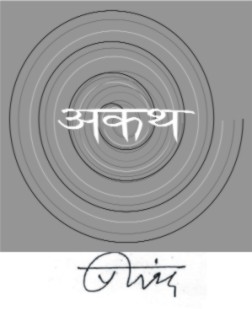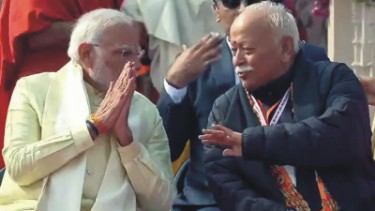
In the section called ‘Political Line’, the draft states that the 11-year-old Modi regime resulted in the “consolidation of the right wing, communal, authoritarian forces with neo fascist characteristics” and that the government represents “the alliance of the Hindutva forces and the big bourgeoisie.”
Prakash Karat, the coordinator of the Politburo and Central Committee of the Communist Party of India-Marxist (CPI-M) has circulated the Draft resolution for the 24th party Congress of the CPM scheduled next month in Madurai, Tamil Nadu.
In the section called ‘Political Line’, the draft states that the 11-year-old Modi regime resulted in the “consolidation of the right wing, communal, authoritarian forces with neo fascist characteristics” and that the government represents “the alliance of the Hindutva forces and the big bourgeoisie.”
In a signed “note” issued to all state committees of the CPI-M on February 4, Karat who was chosen to coordinate the CC and PB upon the sudden untimely death of former general secretary of the party, Comrade Sitaram Yechury last September, clarified and explained the term ‘neo-fascist’ by stating that, “We are not saying that the Modi government is fascist or neo fascist. Nor are we characterising the Indian state as a neo-fascist state. What we are pinpointing is that after ten years of continuous rule by the BJP, which is the political wing of the RSS, there has been a consolidation of political power in the hands of the BJP/RSS and this is resulting in the manifestation of ‘neo-fascist characteristics.”
He further elaborated in the note saying, “The word ‘characteristics’ means features or trends, but they have not developed into a neo fascist government or political setup.” The Note admits that this position is different from that of the CPI and the CPI(ML). The CPI, it admits, considers the Modi government as “fascist” and, according to the CP(ML), an Indian fascism has been put in place.” Thus, Karat concedes that the dominant view in the Left is that the Indian state under Narendra Modi’s leadership has become fascist.
Significantly, the RSS organ, Organiser in its February 25 issue, took note of this draft political resolution with a sense of satisfaction and wrote, “CPI-M’s refusal to label BJP-RSS as “fascist” in draft resolution shakes the opposition eco system.”
“In a move that has sent shock waves across India’s political landscape, the resolution notably refrains from labelling the Bharatiya Janata Party (BJP) and Rashtriya Swayamswevak Sangh (RSS) as ‘fascist’ organisations.’ The CPI-M’s refusal to use the term ‘fascist’ …has left the Congress, and other opposition parties, reeling and scrambling for a response,” stated the Organiser commentary.
One thing is evident in this draft prepared by former CPM general secretary Prakash Karat. That if it is accepted as it is, it would signify moving considerably away from the party line under the leadership of late Sitaram Yechury who endeavoured hard throughout his tenure to forge a larger secular, democratic anti-fascist alliance against the Modi regime and his alma mater the RSS.
Also that if Karat succeeds in carrying with him the CPM in the impending party Congress, it would mean carrying the one-time main Opposition in Parliament, away from the mainstream Opposition, in effect endorsing much of what Modi and RSS have been doing throughout these 11 years, who wilfully shrank the space for any dissent or criticism of not just Modi, the BJP or even the RSS, the source of strength and consolidation of right wing in India.
The RSS was founded in Nagpur on 27 September, 1925 and on 26 December, 1925, within three months the Communist Party was founded in Kanpur in India.
The guiding force behind the RSS was Dr. B.S. Moonje who went to Italy from March 15 to 24, 1931, where he met Italy’s then Prime Minister Benito Mussolini and was taken on a guided tour of organizations such as Balilla, the Accademia della Farnesina and other military schools and educational institutions to impress upon him how the militarization of society can be achieved through fascism. In this education tour he also visited the Italian Fascist youth organization the Opera Nazionale Balilla, and immensely praised its functioning. The Sangh’s adoption of fascism as a role model to perpetuate the idea and implementation of a Hindu Rashtra through militarisation of Hindu youth was borrowed by Moonje from Italian fascists and implemented by Hedgewar and his team.
In effect, there has never been a confusion in the Sangh and the minds of its followers that India is a Hindu Rashtra, of the Hindus, by the Hindus and for the Hindus. The attempt to bring in the Citizenship Amendment Act (CAA) to discriminate against the largest minority of the country, the Muslims in this respect, is guided by the ideological framework of the Sangh’s second and longest serving Sarsanghchalak Madhav Sadashivrao Golwalkar whom the Sangh considers the “best son of Bharat Mata and the “biggest gift to Hindu society.’(Shamsul Islam in Golwalkar: A critique)
Throughout his life Golwalkar stood for the establishment of a Hindu Rashtra where the minorities like Muslims and Christians could exist only as second-class citizens. And Sikhism, Jainism and Budhism could exist only as part of Hinduism and not as independent religions. Under his leadership the RSS rose as a powerful organisation firmly opposed to democratic, secular and egalitarian India. “He remained committed to the concept of Hindutva, which meant inherent faith in Casteism, Racism and Imperialism.” Shamsul Islam.
And what are the Bhakts of Modi the Vishwa guru stating, except that the “non-biological” Modi is an Avtar descended upon this earth to lead the Hindus to rule the entire world. And yet Karat doesn’t consider either Modi or even the RSS as fascists, not even neo-fascists. But let’s see how the world defines or describes Fascism.
For Robert Paxton, ultranationalism, combined with the myth of national rebirth, is a key foundation of fascism. He argues that “a passionate nationalism” is the basis of fascism, combined with “a conspiratorial and Manichean view of history” which holds that “the chosen people have been weakened by political parties, social classes, unassimilable minorities, spoiled rentiers, and rationalist thinkers.”
Roger Griffin identifies the core of fascism as a nation of a single organic entity that binds people together by their ancestry and is a natural unifying force of people. Fascism, says Griffin, seeks to solve economic, political, and social problems by achieving a millenarian national rebirth, exalting the nation or race above all else and promoting cults of unity, strength, and purity.
European fascist movements typically espouse a racist conception of non-Europeans being inferior to Europeans. European fascism grew in opposition to Marxism, Democracy, Pluralism, free markets, egalitarianism, Communism, liberalism, and socialism. Thus fascism is at the far right of the traditional left–right spectrum.
It is characterized by a dictatorial leader, centralized autocracy, militarism, forcible suppression of opposition, belief in a natural social hierarchy, subordination of individual interests for the perceived good of the nation or race, and strong regimentation of society and the economy. If the present Modi government is not fascist in Karat’s perception, then we rather delete the words fascism and fascists from the Dictionary.
As a matter of fact, this is not the first time Karat has come up with the thesis of letting Modi and his authoritarian regime off the fascism hook. But as long as Yechury was alive Karat’s thesis was not taken seriously because this was not the party line. But now he is pushing this for adoption in the impending party Congress.
He also talked of Left unity which anyway seems in danger if this line is adopted by the CPM party congress. Not just that, at a time when CPM needs a larger alliance of secular, democratic forces not for the Nation alone but for the survival and growth of the party itself, Karat’s line seems to be pushing the CPM into political isolation




